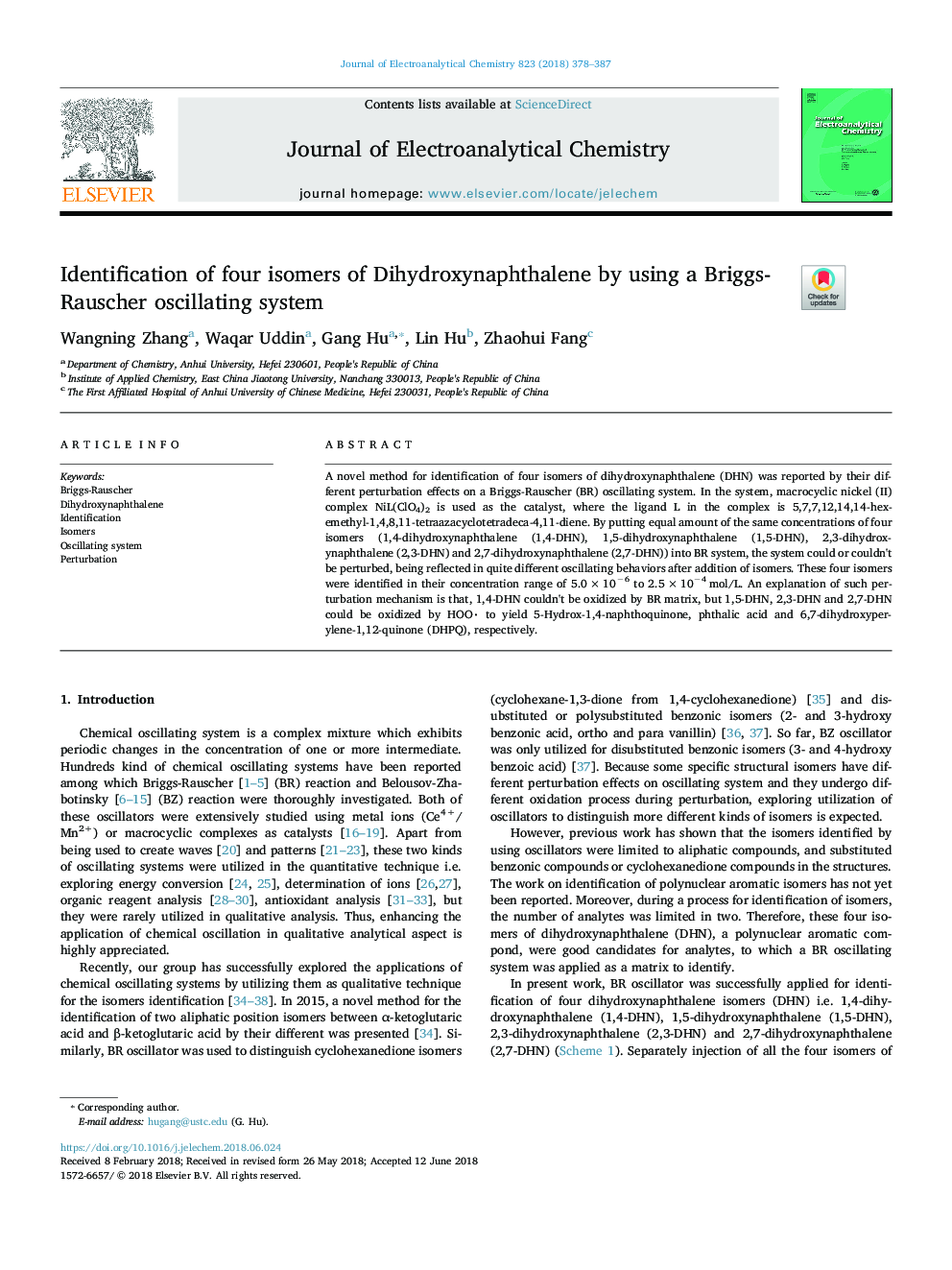| Article ID | Journal | Published Year | Pages | File Type |
|---|---|---|---|---|
| 6661607 | Journal of Electroanalytical Chemistry | 2018 | 10 Pages |
Abstract
A novel method for identification of four isomers of dihydroxynaphthalene (DHN) was reported by their different perturbation effects on a Briggs-Rauscher (BR) oscillating system. In the system, macrocyclic nickel (II) complex NiL(ClO4)2 is used as the catalyst, where the ligand L in the complex is 5,7,7,12,14,14âhexemethylâ1,4,8,11âtetraazacyclotetradecaâ4,11âdiene. By putting equal amount of the same concentrations of four isomers (1,4âdihydroxynaphthalene (1,4-DHN), 1,5âdihydroxynaphthalene (1,5-DHN), 2,3âdihydroxynaphthalene (2,3-DHN) and 2,7âdihydroxynaphthalene (2,7-DHN)) into BR system, the system could or couldn't be perturbed, being reflected in quite different oscillating behaviors after addition of isomers. These four isomers were identified in their concentration range of 5.0â¯Ãâ¯10â6 to 2.5â¯Ãâ¯10â4â¯mol/L. An explanation of such perturbation mechanism is that, 1,4-DHN couldn't be oxidized by BR matrix, but 1,5-DHN, 2,3-DHN and 2,7-DHN could be oxidized by HOO to yield 5âHydroxâ1,4ânaphthoquinone, phthalic acid and 6,7âdihydroxyperyleneâ1,12âquinone (DHPQ), respectively.
Related Topics
Physical Sciences and Engineering
Chemical Engineering
Chemical Engineering (General)
Authors
Wangning Zhang, Waqar Uddin, Gang Hu, Lin Hu, Zhaohui Fang,
